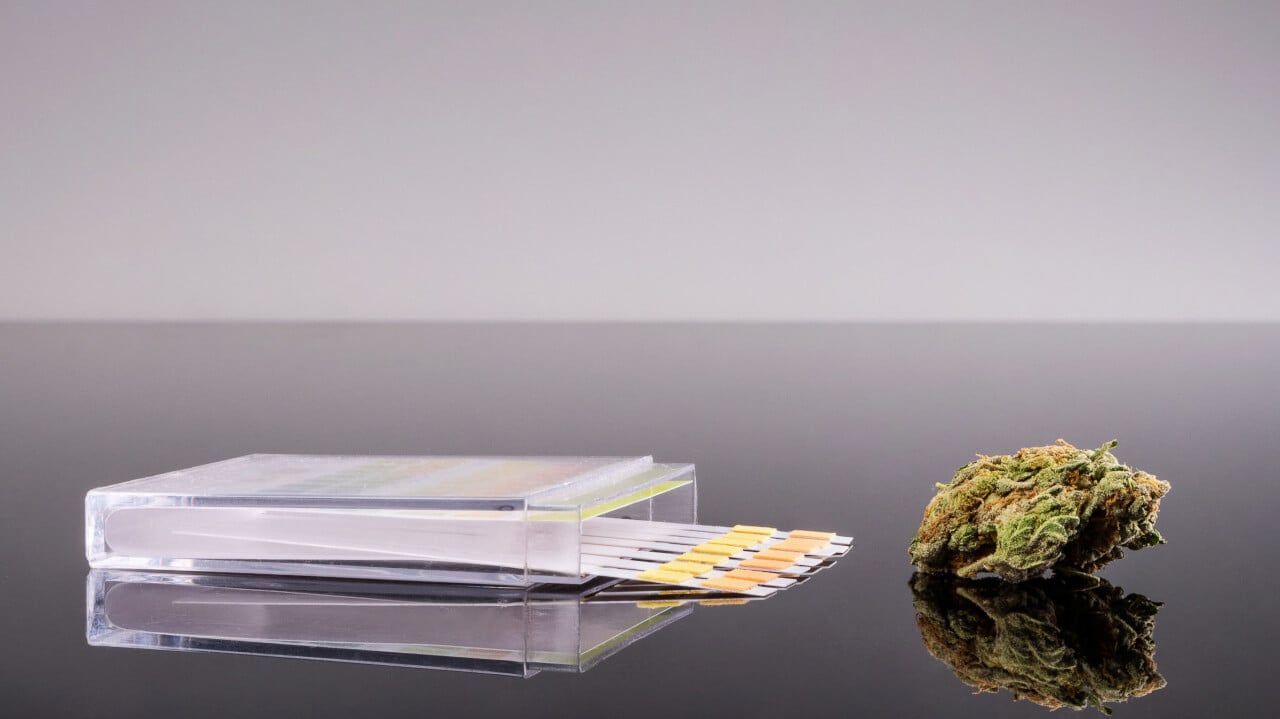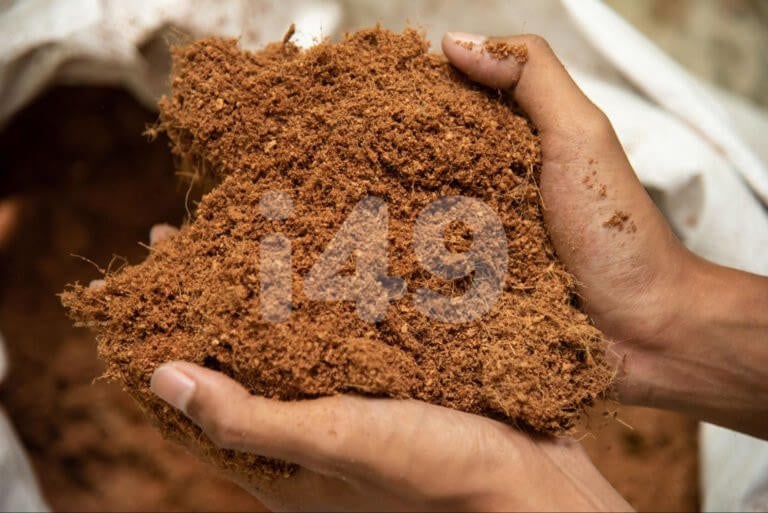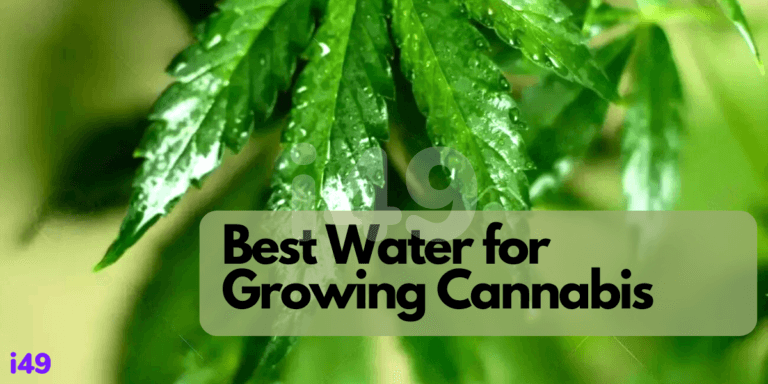Growing marijuana is an art with a whole lot of science thrown into the mix. Besides the right amount of light, water, and nutrients, the ideal pH for cannabis is crucial for a bountiful yield.
Your pH levels can make or break your entire harvest costing you wasted time, money, and effort. It sounds daunting, but it doesn’t have to be because we have everything you need to know.
Learn all about the right pH levels for weed, why they’re vital, and how to adjust them. Plus, we’ve got the lowdown on the best testing methods, top tips, and more in our in-depth guide.
What is soil pH?
Before we get into the pH levels for cannabis, it’s wise to have a fundamental understanding of the science. “pH” stands for “power” or “potential” of hydrogen. It’s a unit that measures the alkalinity or acidity of a liquid on its own or dissolved in a substance, like soil.
The pH scale ranges from 0.0 to 14.0, with 7.0 being neutral, like pure water. Anything over 7.0 is considered alkaline, like baking soda, ammonia, or bleach. Meanwhile, pH levels below 7.0 are acidic, such as vinegar or lemon juice.
Scientifically speaking, pH refers to the concentration of hydrogen ions (Hᐩ).
The higher the pH, the more alkaline the solution or substance. There are also fewer hydrogen ions. The opposite is true for lower pH levels, which are more acidic.
Lastly, the pH scale is logarithmic, which means that it works to the base of 10 either way. In other words, a pH of 5.0 is 10x more acidic than a pH of 6.0., and so on.
As such, every little decimal point counts when it comes to the pH for marijuana growing.
What makes pH important for cannabis?
Okay, so now you know what pH is, but how does it affect the health and growth of your marijuana plants? Well, like all living things on earth, your cannabis crops need nutrients to develop, grow, and thrive.
Macronutrients like potassium, phosphorus, nitrogen, and others all play a vital role in the development stages of a cannabis plant’s life. Similarly, minerals and micronutrients such as magnesium, iron, copper, and more are also essential.

If a marijuana plant can’t access these nutes, then deficiencies occur. This is where pH levels come in. The availability of different nutrients depends on the pH of your growing medium.
Maintaining optimal pH levels for cannabis plants allows them to take in the required nutrients through their roots.
The ideal pH for cannabis in soil ranges from around 6.0 – 7.0. If this number is too high or too low, then the marijuana plant can’t absorb the nutes it needs – even when they’re present. This results in deficiencies and problems caused by “nutrient lockout.”
The growing medium you use also plays a massive role in figuring out the perfect pH for cannabis. In the wild, marijuana naturally thrives in slightly acidic soil (6.0-7.0).
Conversely, cannabis plants grown with hydroponic or other soilless systems need an even lower pH of around 5.5-6.5.
We’ll get into the details below. First, let’s look at how to prevent nutrient lockout and the issues surrounding pH levels for weed.
Issues with pH imbalances
When pH levels are left unchecked, the results can be disastrous. Some cannabis growers get lucky and never have to worry about it.
In fact, pH imbalances are one of the most common causes of nutrient deficiencies in weed. A lot of novices try fixing the issue by giving their cannabis crops even more nutes, which is just as unhealthy.
When marijuana pH levels are imbalanced, too many nutrients can build up close to the roots. This creates a toxic environment around a plant that can’t absorb anything.
As mentioned, cannabis crops can only take in nutes within a certain pH range. If the pH of the growing medium falls outside of that window, your marijuana plant won’t be able to nourish itself.
Nutrient lockout will kick in, and there’ll be signs of deficiencies or excesses, such as:
- Stunted growth
- Weak and flimsy stems
- Curling or yellowing leaves
- Poor yields
Figuring out the perfect pH for cannabis plants
When determining the right pH for weed, keep in mind that some fluctuation is actually good. It promotes optimal nutrient intake because various nutes are absorbed at different pH levels and growth stages.

As long as you keep the pH within the ideal range, the levels can increase and decrease.
Here’s how to figure out the perfect pH for cannabis cultivation according to your growing medium:
For soil
When choosing the best soil for cannabis, pH isn’t always something that comes to mind. In fact, it’s less of a concern to organic growers that don’t administer any nutes themselves. Natural compost also contains microorganisms that help with nutrient absorption.
That said, if you’re using fertilizer or any other additional minerals, it’s best to manage pH levels. The ideal soil pH for cannabis is slightly acidic, so it should stay within the range of 6.0-7.0.
Soil acts as a natural buffer. This makes it a slightly more forgiving medium than hydroponic systems when it comes to marijuana pH imbalances.
Hydroponic and soilless mediums
In hydroponic and soilless mediums like coco coir or perlite, pH changes take effect much quicker than in soil. You’re also in control of administering nutes directly to the root zones, so pH imbalances are more of a risk factor.
The optimal pH level for cannabis growing in hydro and soilless mediums is between 5.5 and 6.5. Remember to allow naturally occurring fluctuations for optimal nutes absorption.

When preparing the nutrient solution, never mix nutes together. The chemical properties could react with one another and change their composition. Add them to the water separately.
While you can shake your nutrient solution to add oxygen for the roots, only do this after you’ve already checked and adjusted the pH levels. Lastly, be careful not to overdo it with the nutes.
How to test pH
Finding and maintaining the best pH for weed centers around testing and adjusting the levels when required. It sounds complicated, but once you know how, it’ll only take a few minutes.
If the pH levels fall outside of the desired range, you’ll likely need to regulate your growing medium.
Testing pH in soil
Remember, the pH for cannabis in soil should be 6.0-7.0. You can either use pH drops or a digital pH meter for testing. The former is quick and easy but less accurate, while the latter is more precise but requires calibration.
You could also use paper strips covered in pH-sensitive dye that changes color when dipped into a solution. It comes with a color chart to determine pH levels. You’ll need to mix equal amounts of neutral (7.0) water and soil to get a reading.
Measurement kits with pH drops typically come with a bottle of testing liquid, a test tube, and a color-coded pH chart. Here’s how to use it:
- Prepare your fertilizer normally, stirring it gently to prevent over-oxygenation.
- Fill your test tube about halfway with fertilizer.
- Add 3 drops of testing solution and mix it in by gently shaking the vial.
- Determine the pH levels using the color chart provided.
- Make any necessary adjustments.
- Repeat steps 1-5 with the runoff water after adding fertilizer.
If you’re using a digital meter to find the pH for your cannabis plants, make sure it’s calibrated beforehand. Simply stick it into your fertilizer, runoff, and soil for an accurate reading.
Testing in hydroponics
Hydroponic weed grows best in a pH range of 5.5-6.5. Test your freshly made nutrient solution by following the above steps 1-5. Repeat the process an hour later as the levels tend to change during this time.
You’ll need to perform another test using a sample from your reservoir after you’ve allowed time for the nutrient solution to dissolve.
If you’re using pH strips, follow the same rules for your solution and water sample. The digital pH meter works the same way for hydro systems as it does for soil.
If the nutrient solution or water pH for your cannabis plants falls below 5.5 or above 6.5, then you’ll need to make some adjustments.
Testing for soilless mediums
Soilless mediums such as perlite or coco coir are entirely inert. This means they don’t contribute any nutes to your cannabis plants.
Instead, they act as a root support structure while you administer the nutrients. Technically, they’re classified as hydroponics for this reason.
You’ll need to test the water pH for your cannabis crops as well as any nutrient solutions. You can follow the same processes for hydro systems.
Should you invest in a pH meter?
For cannabis pH, a digital pH meter is much quicker and easier to use than pH testing drops or strips. It also provides more accurate pH readings. Don’t worry about getting an expensive model because even a basic one will do the trick.
If you invest in a pH meter, also get some buffered pH solutions for reference. You can use them to check the accuracy and performance of the device.

How to adjust the pH for cannabis crops
If the pH levels for your weed crops fall outside of the optimal range, you’ll need to either increase or decrease the pH. Avoid drastic change or you’ll put your cannabis plants under stress.
Most growers use products like “pH Up” and “pH Down,” but there are loads of brands on the market. Always follow the manufacturer’s instructions.
The precise amount you’ll need depends largely on whether your water is “soft” or “hard.” The former (usually reverse osmosis or filtered water) has less “stuff” in it to buffer the pH, so less solution is better. Conversely, the latter (tap water) requires a higher dose.
Everyone’s water and system vary, so it’ll take a bit of trial and error in the beginning. After some practice, you’ll know exactly how to get to the right cannabis pH level.
Increasing pH
A product like pH Up increases pH levels when they’re too low (acidic). Add tiny amounts (roughly about 0.4-0.8 tsp per gallon) to your water or nutrient solution.
It’ll raise the pH by around 1.0 units. You can then re-test the pH levels to see if they’re within the optimal range.
You may have to repeat this process a couple of times to get to the proper pH for cannabis growing. Still, it’s best to start small rather than overdo it.
Alternatives like dolomite lime or limestone and wood ash for soil also help drive pH levels up.
Decreasing pH
Lowering the cannabis pH levels when they’re too high (alkaline) works much like the above. With pH Down or a similar product, a rough estimate of about 0.2 tsp per gallon can push the pH down by around 1.0 units.
Again, start small, re-test, and repeat the process if you need to. You can also use vinegar or lemon juice, but dilute them properly, or you’ll damage your marijuana plant.
Organic matter like compost, worm castings, pine needles, wood shavings, and manure help lower pH levels, too, only gradually and more gently.
They also promote healthy growth and prevent pests and pathogens thanks to the microbial life around your weed plant’s roots.
Final word on cannabis pH
The best pH for cannabis growers hinges on various factors, like your growing medium, nutrient solutions, and water type. If you want healthy crops producing maximum yields, keep pH levels within the optimal range.
Allow for fluctuations, but be sure to test the pH regularly and make adjustments accordingly. Don’t go too drastic, though, or your weed crops will suffer.
While maintaining the proper pH for your cannabis plants is crucial, so is the right amount of nutes, light, and water. Of course, a fruitful harvest starts with top-notch marijuana seeds, like the ones you’ll find at i49.
Check out our amazing selection and get your own stash going today.











